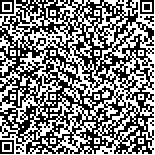Archive > Volume 45 Issue 3 > 2019,45(3):318-329. DOI:10.7519/j.issn.1000-0526.2019.03.003 Prev Next
Estimating the ShortTime Severe Precipitation of Typhoon Meranti and Its Evolution by Using the Infrared Brightness Temperature Data from Himawari8 Satellite with High SpatioTemporal Resolution
- Article
- Figures
- Metrics
- Preview PDF
- Reference
- Related
- Cited by
- Materials
Abstract:
In order to explore applications of satellite data with high resolution to the prediction of typhoon precipitation, a landfall typhoon case (Super Typhoon Meranti) was studied by using Himawari8 (H8) satellite data. The precipitation intensity was estimated first by using an improved QPE (quantitative precipitation estimation) method and then evaluated by observation dataset from CIMISS (China Integrated Meteorological Information Sharing System). The results are as follows. (1) The precipitation estimated from H8 satellite has a good correspondence with the ground observations in terms of rainfall area, but the satellite overestimates weak precipitation and underestimates heavy rainfall, especially at high altitudes, which is due to lack of consideration of terrains’ effect on promotion of precipitation in the QPE algorithm. (2) The time series of precipitation intensity from estimation and observation do not vary in same phase, and the observed precipitation lags behind the estimation. (3) Generally, the precipitation intensity estimated by the H8 satellite is positively correlated with the total precipitation later observed over a period (about 2-2.5 h). Besides, the correlation is also large between the total precipitation over a period (about 2-2.5 h) estimated by the satellite and the precipitation intensity measured on the ground later. This indicates that precipitation estimated by the H8 satellite could play an indicative role in the early warning of typhoon precipitation.
Keywords:
Project Supported:
Clc Number:


Mobile website









